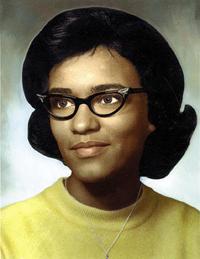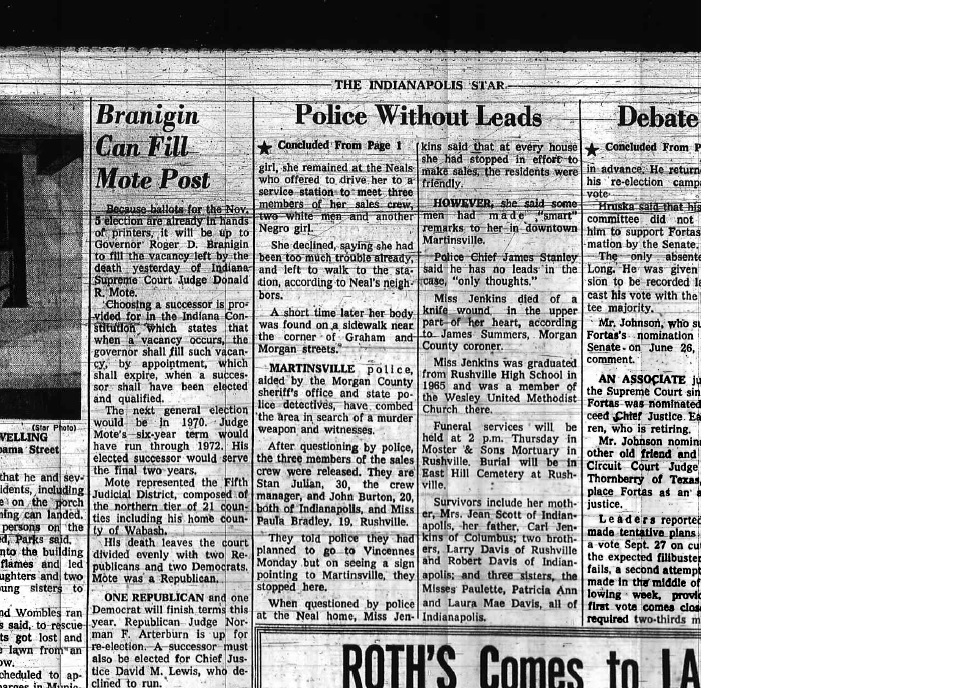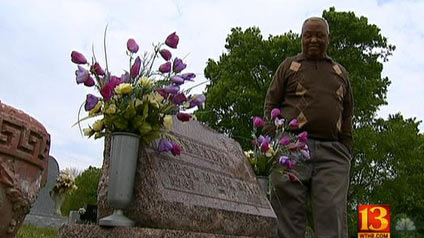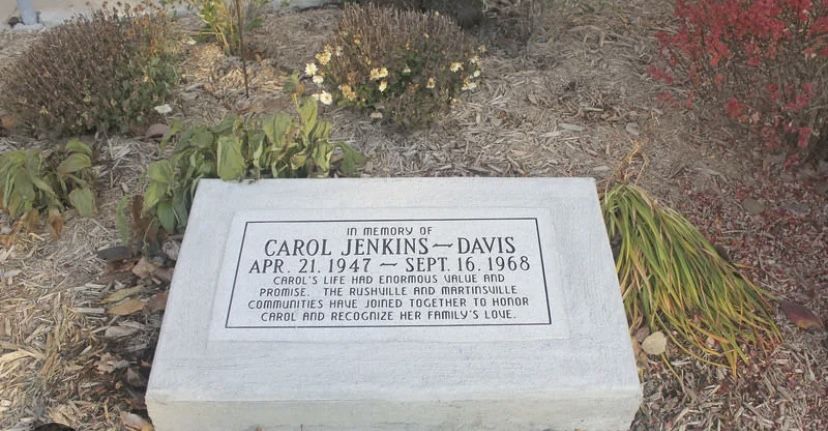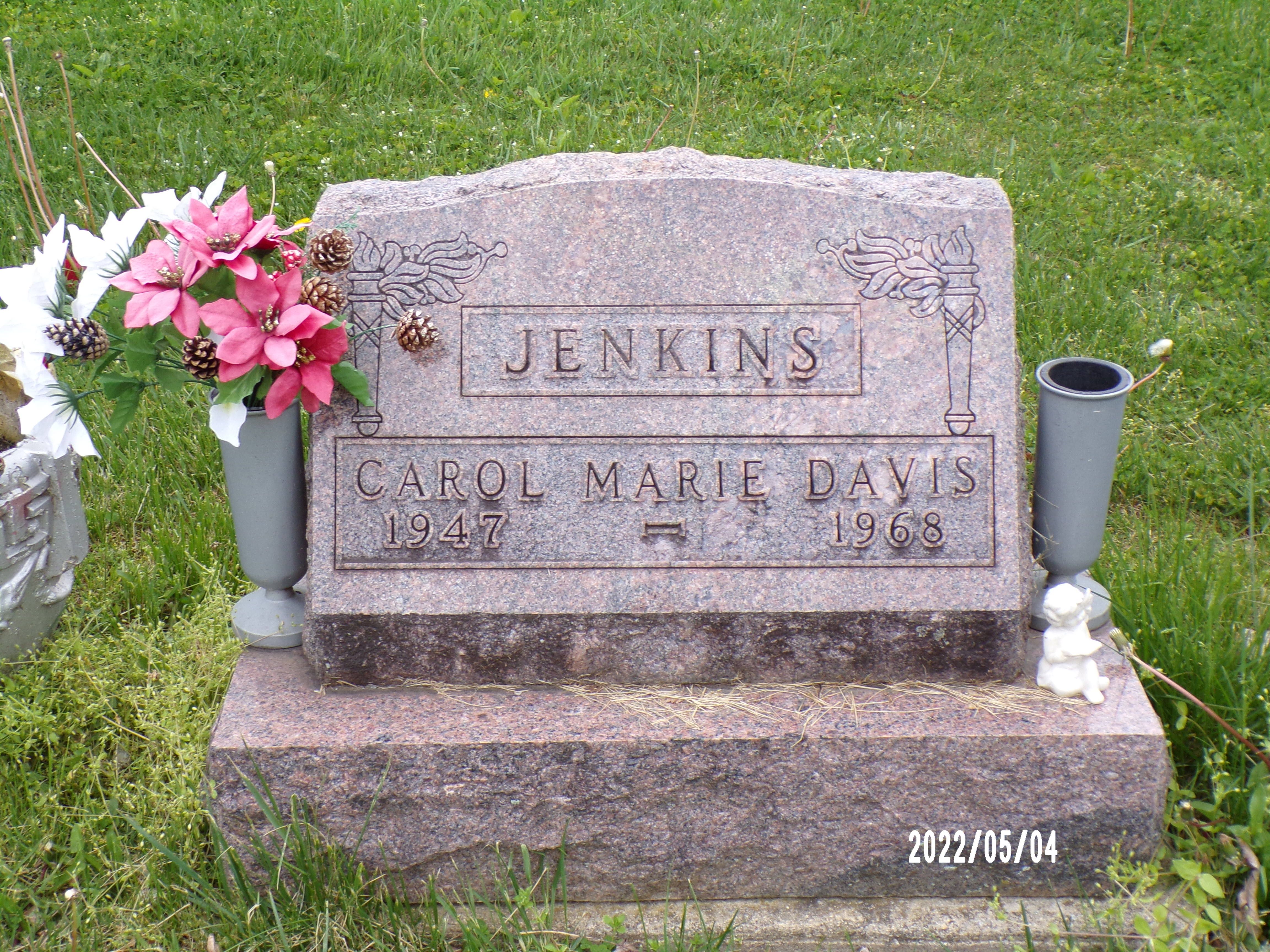****************************************
For more than 34 years the murder of Carol Marie Jenkins remained unsolved. But on May 8, 2002, police arrested Kenneth C. Richmond, a 70-year-old career criminal with a history of bizarre behavior and affiliation with groups such as the KKK.
Investigators said Richmond was implicated in the crime by his daughter, Shirley Richmond McQueen, who witnessed the slaying as a child.
State police detectives, working in a "cold crimes" squad, were led to McQueen by an anonymous letter. When questioned, they said, she finally confirmed what the letter alleged -- that as a 7-year-old, she had watched from the back seat of a car as her father and another, still-unidentified man killed Jenkins.
State police detectives, working in a "cold crimes" squad, were led to McQueen by an anonymous letter. When questioned, they said, she finally confirmed what the letter alleged that as a 7-year-old, she had watched from the back seat of a car as her father and another, still unidentified man killed Jenkins.
Detectives said they were convinced of McQueen's story in part because she remembered a key detail which had never been made public -- that Jenkins was wearing a yellow scarf.
McQueen, by then 40, reportedly gave Indiana State Police detectives the following account: Jenkins began to flee when she saw the two men running at her. The other man held Jenkins while Richmond grabbed a screwdriver from the front seat in their car and stabbed her, McQueen said she still recalls what her father said when he returned to the car: "She got what she deserved." When they got home, her father gave her $7. One dollar for each year of her life -- to keep quiet about what she had seen. But Richmond never went to trial for Jenkin's murder. He was declared incompetent to stand trial and on Aug. 31, 2002 he died of cancer.
***********************************
Justice Denied --- As a teen-ager, Carol Jenkins wanted to move to Chicago and BECOME A FASHION MODEL. Instead of a life filled with glamour and beauty, Jenkins' death became a symbol of violence and ugliness. Racism, many believed, was the only logical motive. The 21-year-old black woman, pretty and shy, wasn't robbed or sexually assaulted.
Investigators say racial hatred was INDEED the motive. But the man accused of the crime was apparently just passing through, an interloper who solidified the Morgan County city's reputation as a place where black people were not welcome.
Jenkins was knocking on doors in Martinsville, Indiana on September 16, 1968, as she and three co-workers -- two white men and a 19-year-old black woman tried to sell encyclopedias. The women were aware of the potential dangers; they had considered buying tear gas guns, according to a newspaper article days after the slaying. The encyclopedia gig was a fill-in job for Jenkins; she worked full time at the Philco Division of Ford Motor Company, but the plant was idled by a strike.
The night she was slain, some men in a car began harassing her. She sought help at the home of Norma and Don Neal, and Norma Neal tried to help Jenkins by driving her around to find her co-workers. When they couldn't locate them, Jenkins ended up back at the home, and the woman offered to drive Jenkins to her rendezvous spot. But Jenkins declined, saying she had been a bother long enough.
Indianapolis Star
by Diana Penner, 2002
*****************************************
Her step-father's last name was Jenkins, and that's what she went by
****************************************
For more than 34 years the murder of Carol Marie Jenkins remained unsolved. But on May 8, 2002, police arrested Kenneth C. Richmond, a 70-year-old career criminal with a history of bizarre behavior and affiliation with groups such as the KKK.
Investigators said Richmond was implicated in the crime by his daughter, Shirley Richmond McQueen, who witnessed the slaying as a child.
State police detectives, working in a "cold crimes" squad, were led to McQueen by an anonymous letter. When questioned, they said, she finally confirmed what the letter alleged -- that as a 7-year-old, she had watched from the back seat of a car as her father and another, still-unidentified man killed Jenkins.
State police detectives, working in a "cold crimes" squad, were led to McQueen by an anonymous letter. When questioned, they said, she finally confirmed what the letter alleged that as a 7-year-old, she had watched from the back seat of a car as her father and another, still unidentified man killed Jenkins.
Detectives said they were convinced of McQueen's story in part because she remembered a key detail which had never been made public -- that Jenkins was wearing a yellow scarf.
McQueen, by then 40, reportedly gave Indiana State Police detectives the following account: Jenkins began to flee when she saw the two men running at her. The other man held Jenkins while Richmond grabbed a screwdriver from the front seat in their car and stabbed her, McQueen said she still recalls what her father said when he returned to the car: "She got what she deserved." When they got home, her father gave her $7. One dollar for each year of her life -- to keep quiet about what she had seen. But Richmond never went to trial for Jenkin's murder. He was declared incompetent to stand trial and on Aug. 31, 2002 he died of cancer.
***********************************
Justice Denied --- As a teen-ager, Carol Jenkins wanted to move to Chicago and BECOME A FASHION MODEL. Instead of a life filled with glamour and beauty, Jenkins' death became a symbol of violence and ugliness. Racism, many believed, was the only logical motive. The 21-year-old black woman, pretty and shy, wasn't robbed or sexually assaulted.
Investigators say racial hatred was INDEED the motive. But the man accused of the crime was apparently just passing through, an interloper who solidified the Morgan County city's reputation as a place where black people were not welcome.
Jenkins was knocking on doors in Martinsville, Indiana on September 16, 1968, as she and three co-workers -- two white men and a 19-year-old black woman tried to sell encyclopedias. The women were aware of the potential dangers; they had considered buying tear gas guns, according to a newspaper article days after the slaying. The encyclopedia gig was a fill-in job for Jenkins; she worked full time at the Philco Division of Ford Motor Company, but the plant was idled by a strike.
The night she was slain, some men in a car began harassing her. She sought help at the home of Norma and Don Neal, and Norma Neal tried to help Jenkins by driving her around to find her co-workers. When they couldn't locate them, Jenkins ended up back at the home, and the woman offered to drive Jenkins to her rendezvous spot. But Jenkins declined, saying she had been a bother long enough.
Indianapolis Star
by Diana Penner, 2002
*****************************************
Her step-father's last name was Jenkins, and that's what she went by




